The Furniture: "The Andromeda Strain" and Designing Around an Invisible Terror
 Friday, March 12, 2021 at 3:15PM
Friday, March 12, 2021 at 3:15PM "The Furniture," by Daniel Walber, is a series on Production Design.
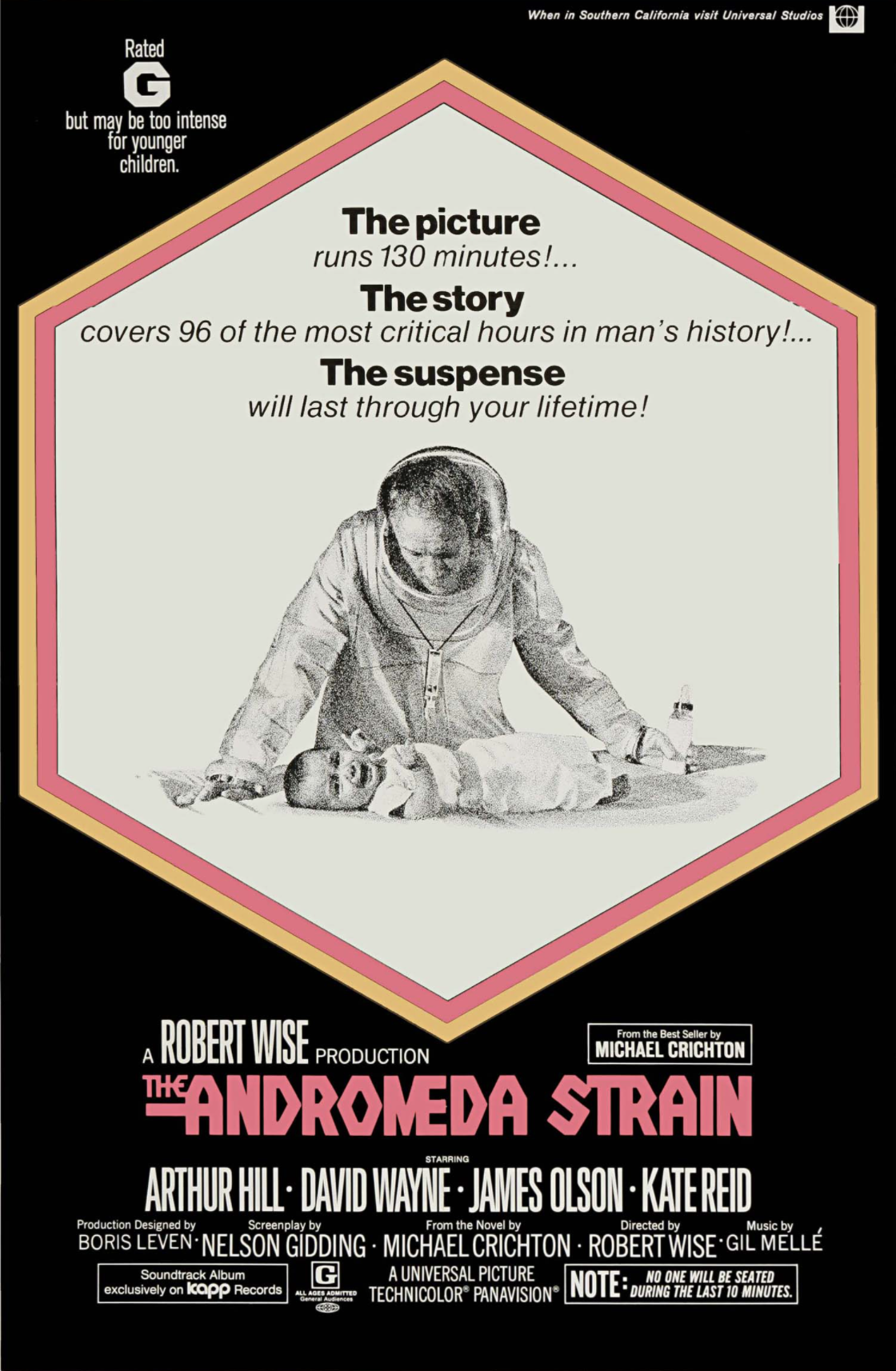 The Andromeda Strain is quite a potent movie these days. True, both Robert Wise’s film and the original Michael Crichton novel were primarily tapping into the anxiety of nuclear proliferation. But today, exactly 50 years since the film’s debut, it has become terrifyingly relevant for entirely different reasons.
The Andromeda Strain is quite a potent movie these days. True, both Robert Wise’s film and the original Michael Crichton novel were primarily tapping into the anxiety of nuclear proliferation. But today, exactly 50 years since the film’s debut, it has become terrifyingly relevant for entirely different reasons.
The story begins with a satellite crash landing in New Mexico, bearing a mysterious extraterrestrial something that wipes out an entire town. A team of scientists is then brought to a top-secret underground facility in Nevada, codenamed “Wildfire,” to figure out what on earth is going on. It’s all about the fear of what we cannot see.
Which, of course, is a fascinating challenge for a design team...
Production designer Boris Leven, art director William Tuntke and set decorator Ruby Levitt applied a handful of clever strategies to imbue the film’s desert exteriors and sterilized interiors with an air of alienation and a growing sense of unease.
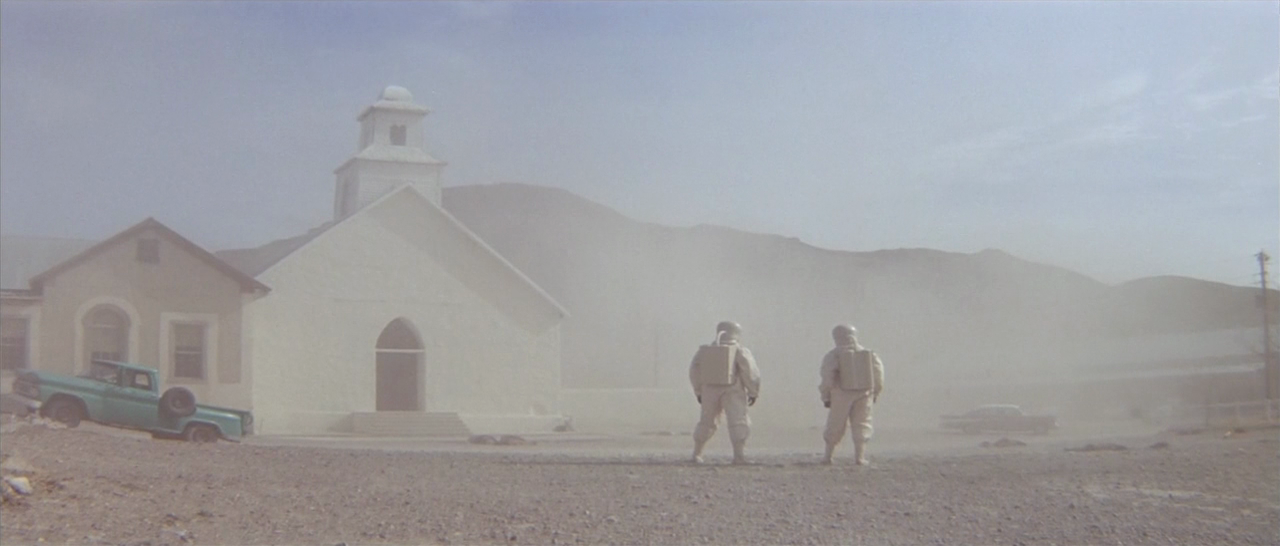
We begin aboveground in Piedmont, New Mexico, Population: 2 - though the day before it was 68. Dr. Stone (Arthur Hill) and Dr. Hall (James Olson) look for the fallen satellite, as well as any survivors. The scene is horrific and surreal. Some victims were arrested in normal activities, but others show evidence of sudden panic.
All things considered, Wise and the design team are very careful not to overplay their hand in the world above. Piedmont does the job of making the world around us look empty and spare, only the image of an inhabited society. The comforts of home and of streetscape, after all, are no guaranteed protection from the microscopic visitor from outer space.
The landscape above Wildfire furthers this odd alienation. The entrance is within this tiny, isolated Department of Agriculture station. The feds are farming a tiny strip of green in the middle of the Nevada desert, only accessible by roads that have intentionally been altered to look risky and disused.
The vast expanse above couldn’t be a more perfect foil to the cramped, windowless labyrinth below. Dr. Dutton (David Wayne) and Dr. Leavitt (Kate Reid) step into a utility closet, actually a secret elevator. Wise makes great use of split-screen and diagrams, turning the characters into game pieces in a pandemic simulation. (And the influence of The Andromeda Strain can certainly be felt in video games, most recently in 2019’s Control).
Their first stop is a shiny, silver security room, a well-lit vestibule that does actually resemble a fairly run-of-the-mill elevator bank.
Beyond, however, is the brightly-colored top floors of Wildfire. Level 1 could be something out of a James Bond film. It has the slickness of a Ken Adam supervillain lair, particularly given the curved, bright red walls.
The first few sequences are quite dynamic, full of bright colors and futuristic gadgets. Dr. Stone gives the team a full rundown on the five levels, their lockdown procedures and what to do in a self-destruct situation. The floorplan, another design precursor to a whole world of science fiction games, has an alienating effect. The scientists aren’t just metaphorical cogs in a machine, they’re literal pixels on a diagram.
They’re also guinea pigs for the latest developments in robot medical analysis. They get a battery of tests on Level 2, which turns out to be an assertive shade of mustard yellow.
It even matches their uniforms.
But that’s all the color we get. Our introduction to Wildfire is strange, flashy and charming, but the actual work to be done below is as serious as a heart attack. The film switches to silvers and grays, accordingly. In their laboratories, the scientists can’t even move about without such (hilariously) extreme protection as giant personalized tubes.
Even something as innocuous and wholesome as a baby’s milk bottle must be treated with the utmost sterility.
Andromeda itself, the microbe that threatens to destroy all life on earth, is a sickly green - perhaps the most obvious color choice, but no matter. It’s effective, activating all of our cultural associations with sticky and slimy contagion.
But we only see it a few times, as tiny blots of paint on metal or as a fuzzy blown-up crystalline structure on a monitor. For the most part, the atmosphere of fear and tension comes from the doctors’ faces, framed by bare walls and the flashes of microscopes and monitors.
And in the end, it is the building itself that nearly sparks the ultimate disaster. The team solves their Andromeda problem, only to hear the shrieking alarms of Wildfire’s self-destruct protocol. Dr. Hall is forced to climb through the facility’s central core just to keep the building from bombing itself - and igniting a nuclear explosion that would rapidly escalate Andromeda’s mutations.
The final boss, so to speak, is Wildfire itself. In the film’s last moments, the set design takes center stafe - a thrill after a film so focused on what we can’t see.
But it’s also at the core of The Andromeda Strain’s message. It turns out that the satellite had been launched in the first place as a secret effort to find biological weapons in space. Wildfire was built to further research those weapons. Andromeda is a chicken come home to roost, a potentially devastating comeuppance for an imperial nation bent on using scientific discovery for military ends. Wildfire turns out to be even scarier than Andromeda.
And these days, when nearly every blockbuster is product placement for the Pentagon, that’s actually quite refreshing - if you can get through the pandemic anxiety, of course.



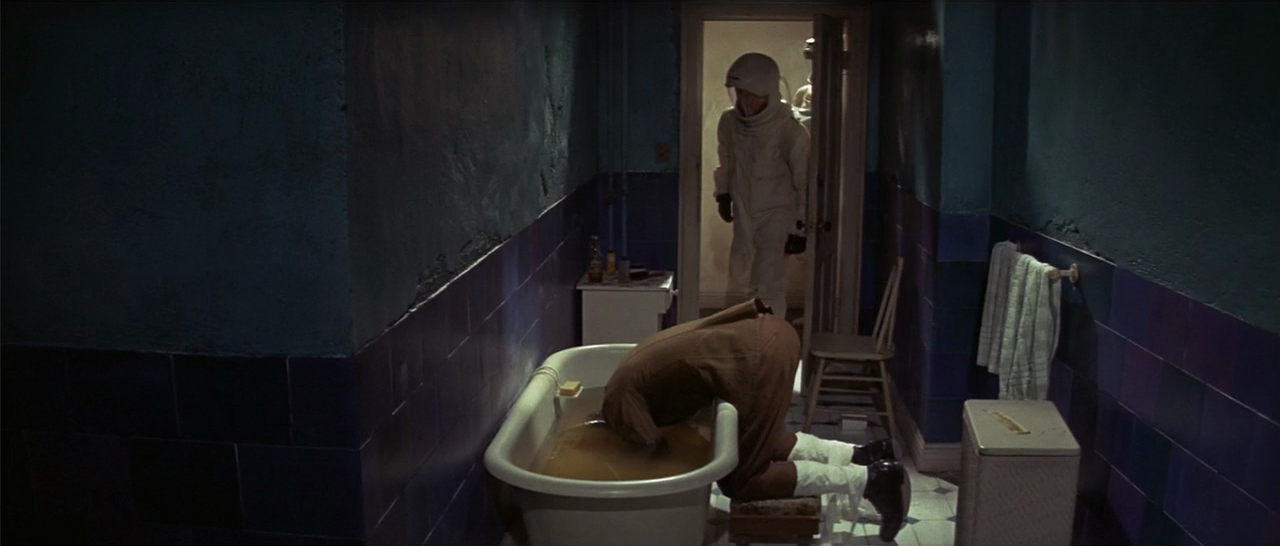
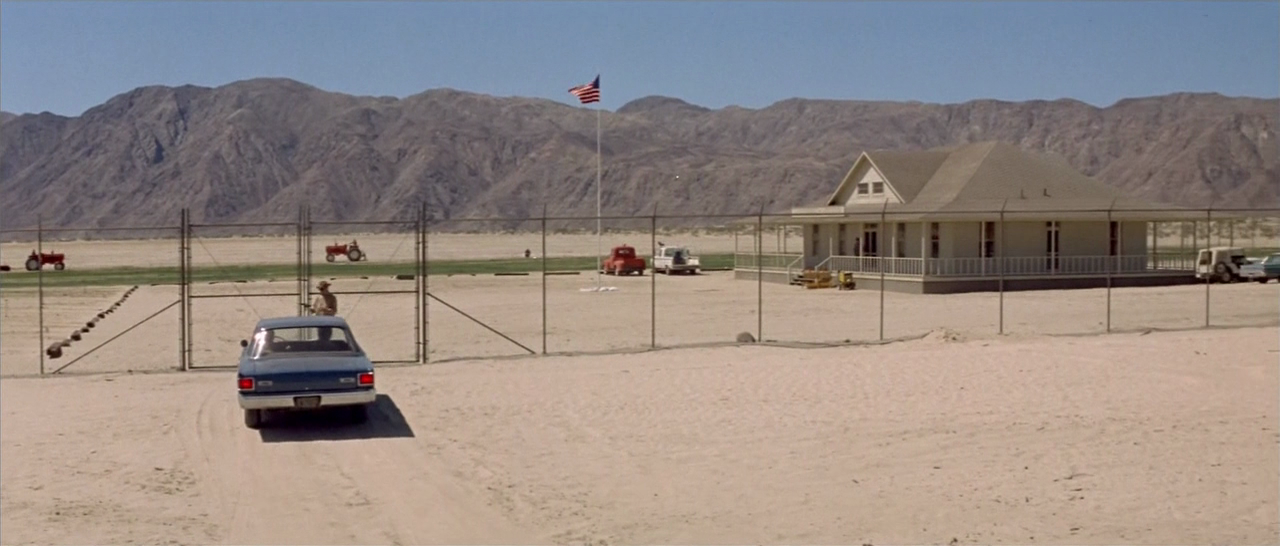
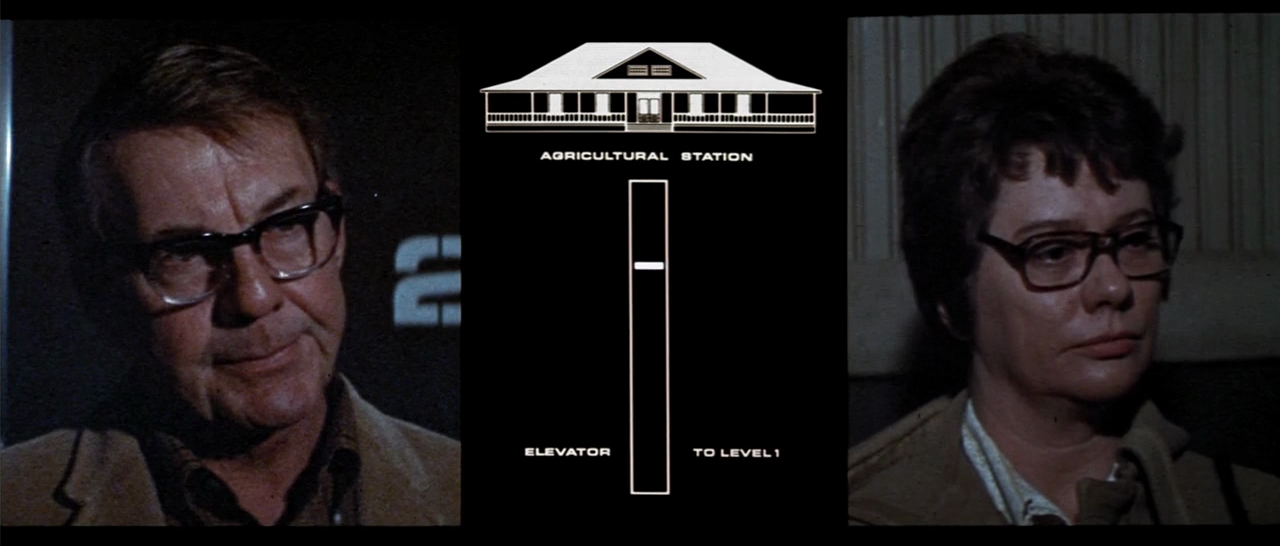
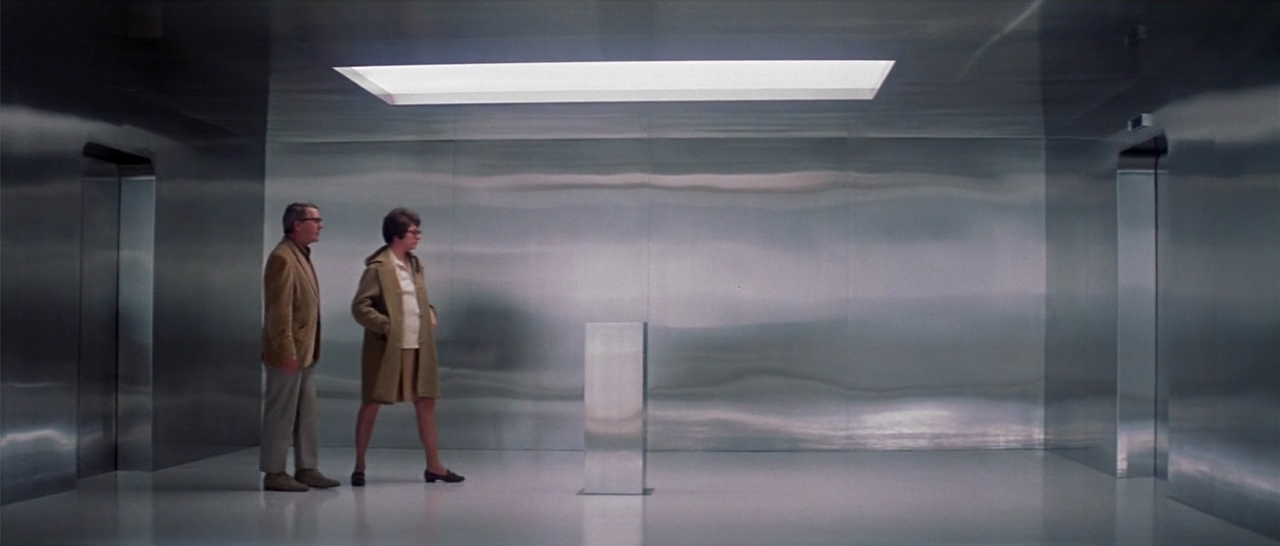
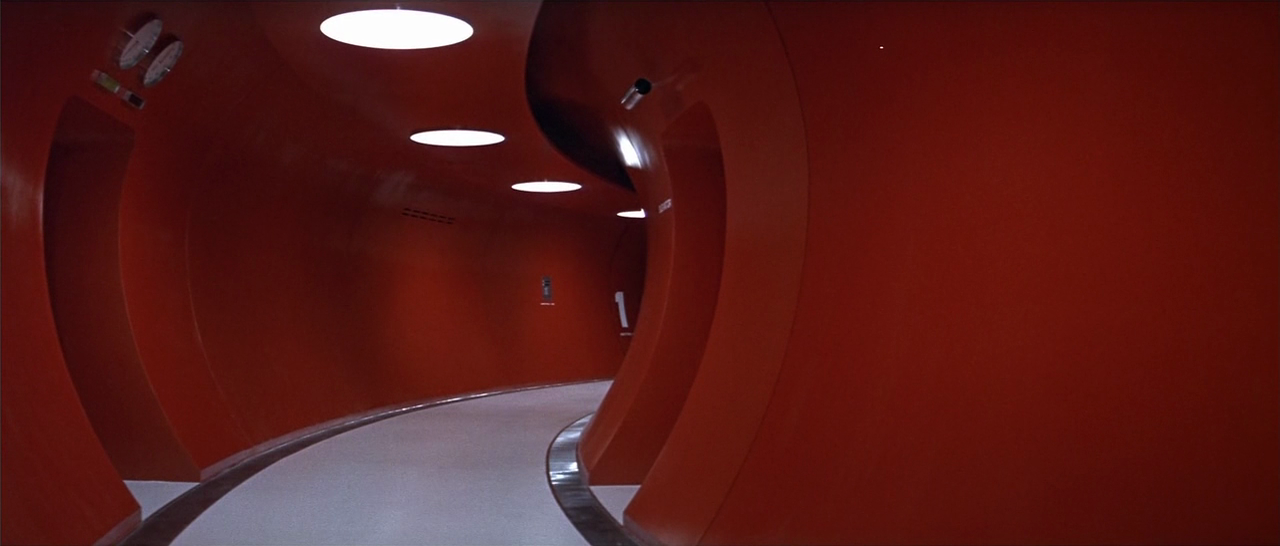
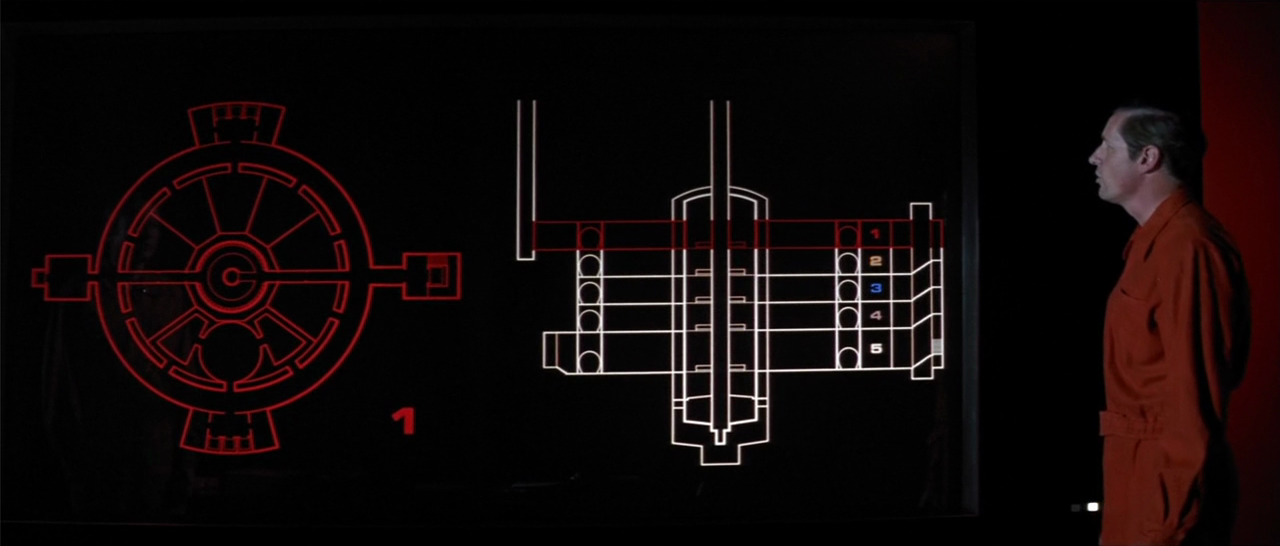
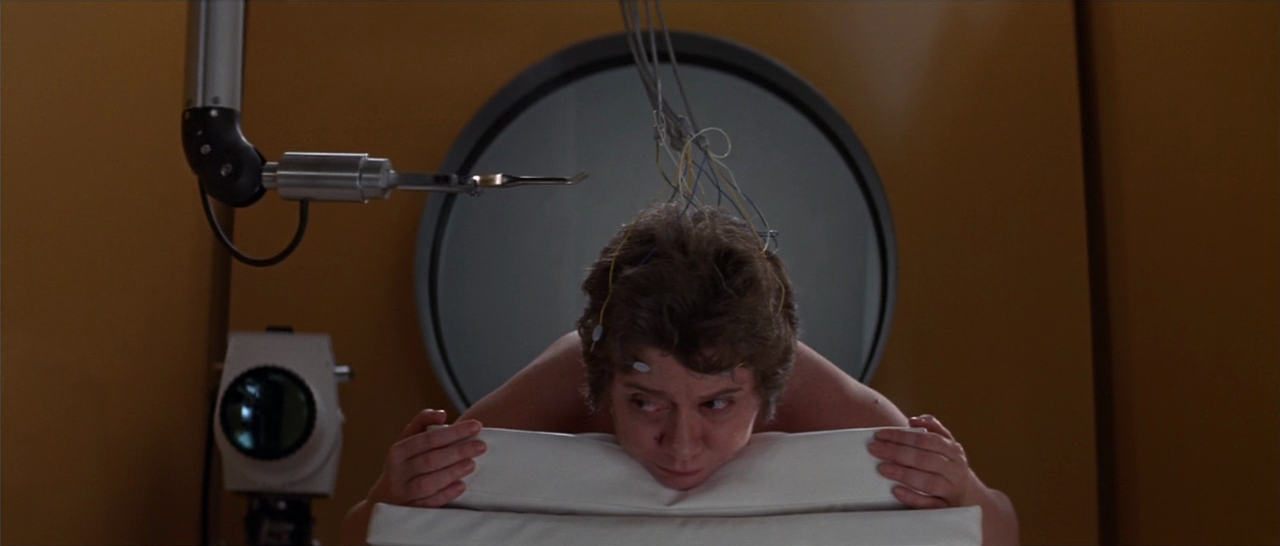
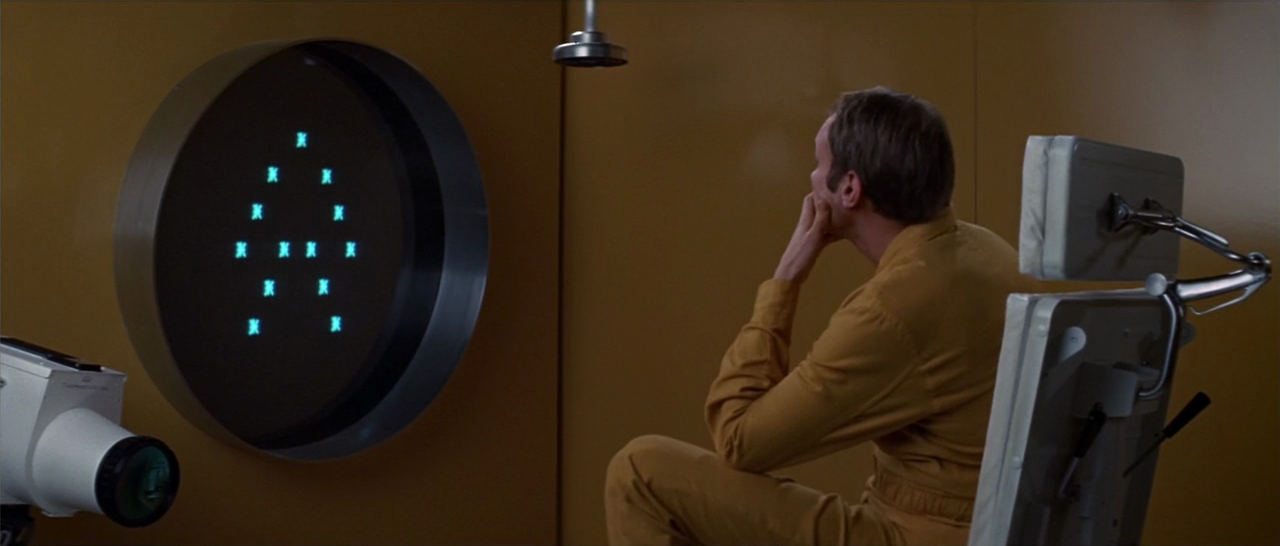

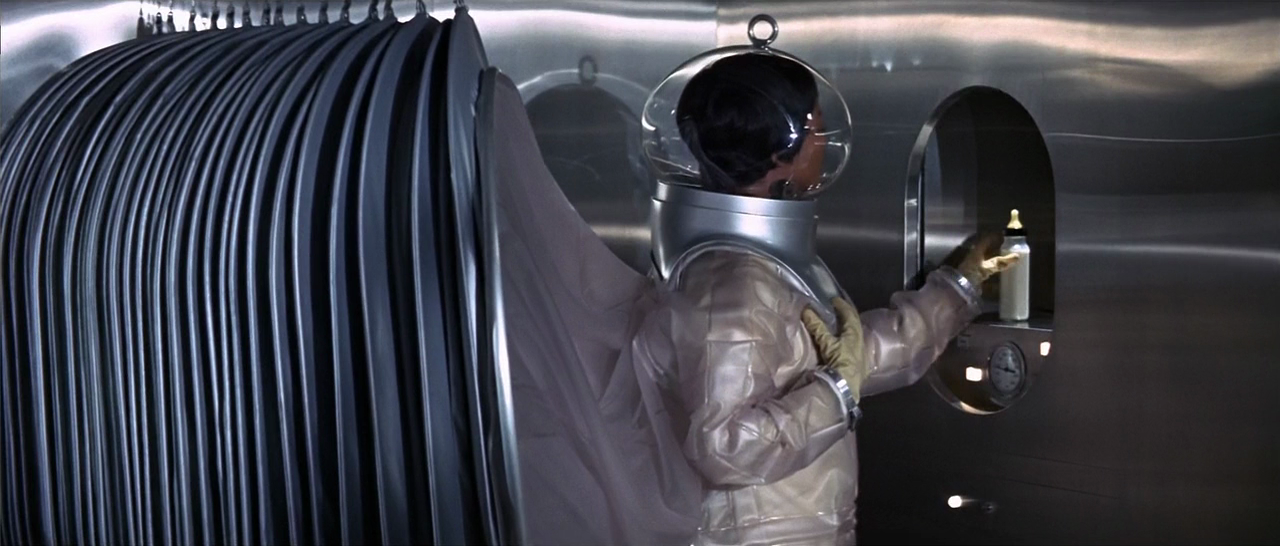
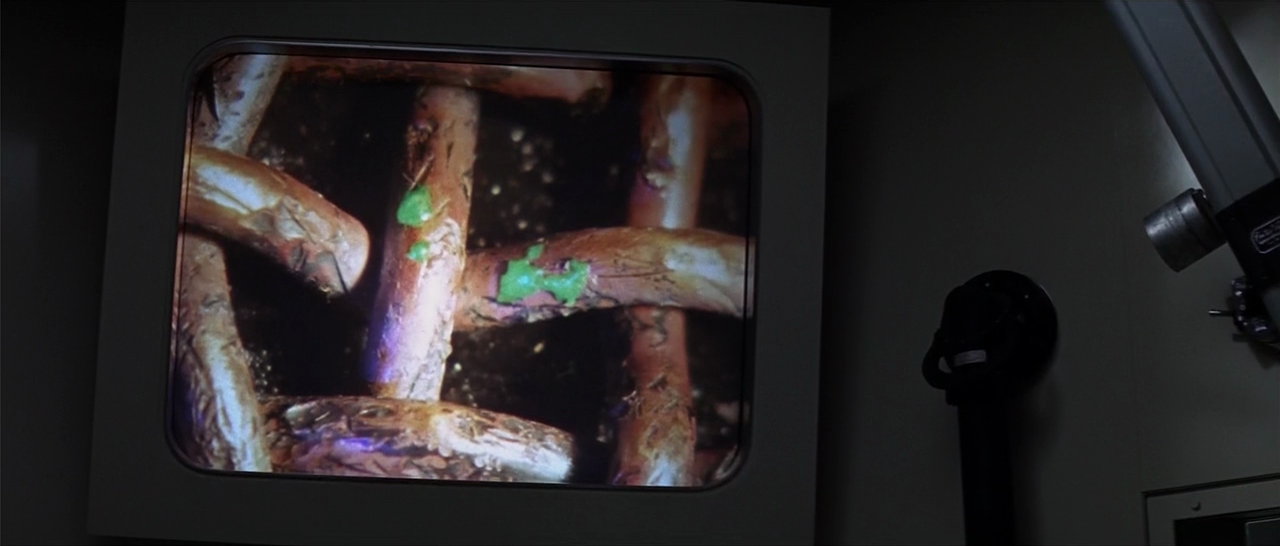
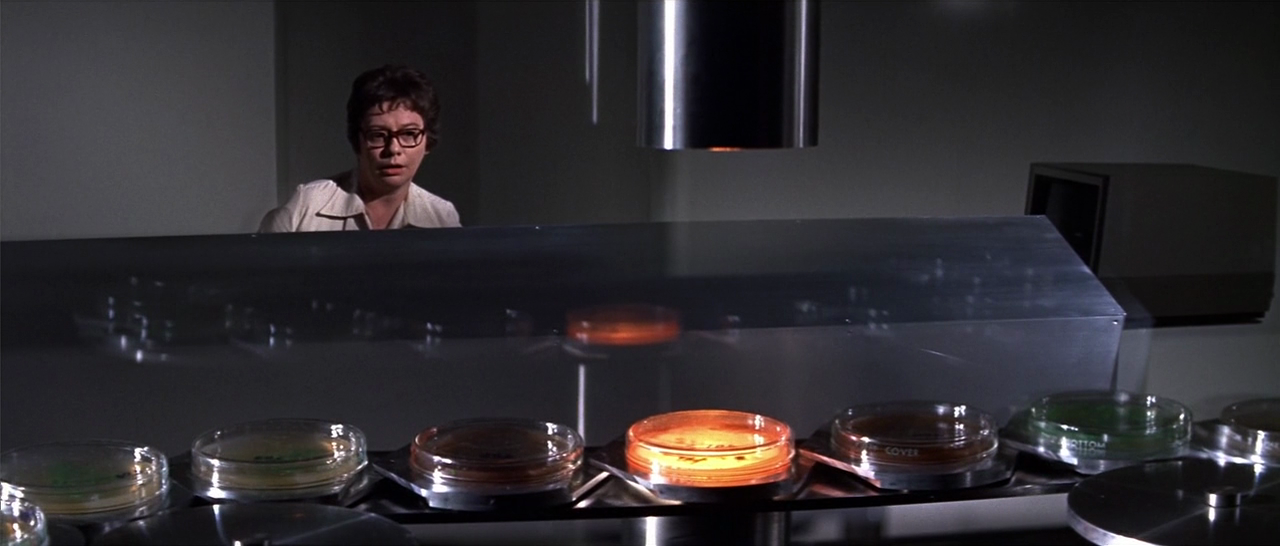
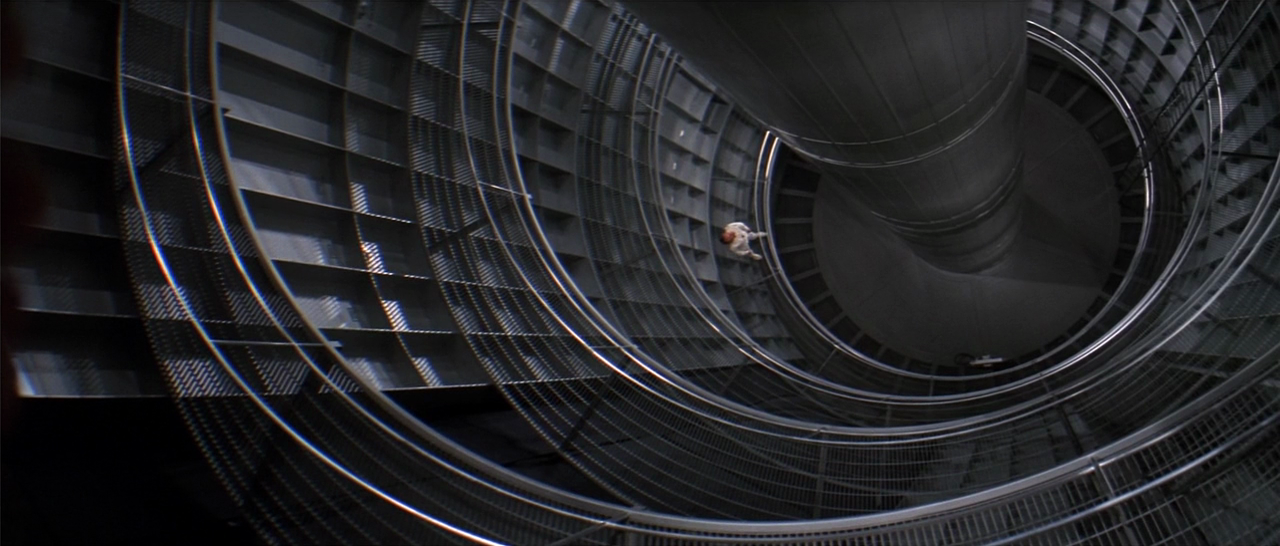
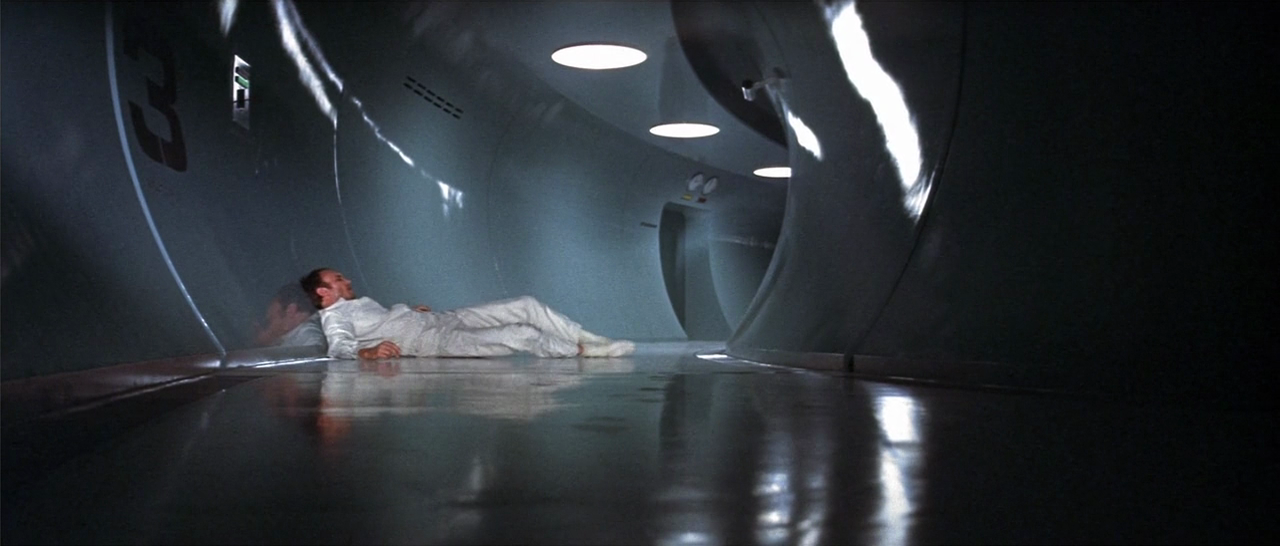
Reader Comments (3)
My parents took me to that at an unusually young age--like six--it was really intense for me but I loved it. And that art direction is first rate.
This was a great read of a picture that I love. Can't count how many times I've seen it and while a great deal of my fondness for it is the performances of the actors cast as the team of scientists the design of the entire picture is very cool indeed. When James Olson is navigating through the labyrinth in a race against the detonator Wise manages to keep the tension taut without showboating.
I loved that movie. Really, loved it. Great sci-fi.